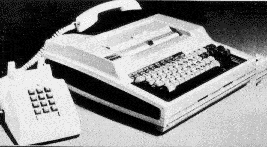
Texas Instruments Portable Memory Terminal Model 765
Used in early PLANET and EIES teleconferences
|
My most satisfying development and design effort was the original EIES effort in 1974-1978 under NSF sponsorship. There were no constraints and sort of complete freedom to innovate… True scientific R&D is an art of doing multiple risk investment with an expectation of like 1 out of 10 investments paying off a hundred fold. – Murray Turoff; Interview; date unknown. |
The Electronic Information Exchange System (EIES) was a follow-on conferencing system to EMISARI.
In 1974, Murray Turoff, then at the New Jersey Institute of Technology, began a project to build on his EMISARI experience to develop the EIES conferencing system, with the help of his later wife Starr Roxanne Hiltz.
The EIES development was funded by the National Science Foundation to build on previous systems and experiences and further explore the potential for computer conferencing. Accessible by telephone line dial-in or computer networks, it was hosted at the Computerized Conferencing Center of the New Jersey Institute of Technology, and at its peak had more than 2,000 subscribers from companies such as Exxon and IBM, Government agencies such as NASA, and universities around the United States. The system was used to deliver courses, conduct conferencing sessions, and facilitate research.
EIES was used in various versions by many different organizations until 2000, well into the years of widespread Internet popularity, and had a significant impact on spreading the experience of conferencing systems throughout the US research community. It also influenced the development of the influential WELL community.
Resources. The following references provide more information on EIES: